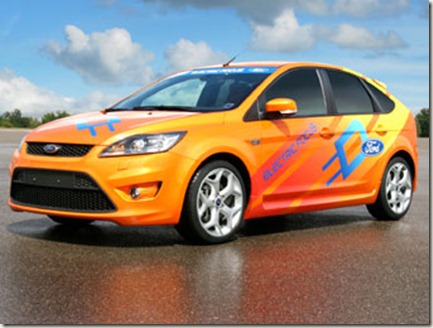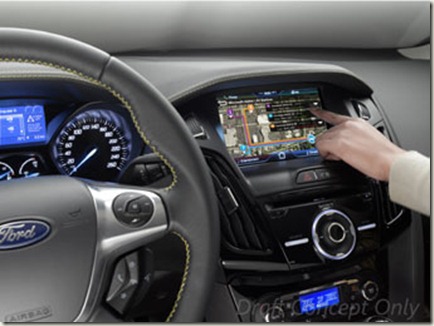Ford and Microsoft team up to enable mass market electric vehicle ownership
Microsoft and Ford Motor Company today announced at the New York Auto Show a partnership around Microsoft Hohm and future Ford electric vehicles. Exciting stuff! This partnership is ultimately about making the mass-ownership of electric vehicles practical for society. A noble cause, for sure. :)
Beyond the grand vision statement, you might be wondering what’s really going on here? What does it all mean, and how is it a partnership? After all, in a true partnership everyone contributes something of value to the others. Here’s my take on it.
If you’re among the many who will purchase a plug-in electric vehicle in the next couple years, you may already know that it’s likely to use more electricity than anything else in your house. While they are cleaner and cheaper than gasoline combustion engines, mass adoption of electric vehicles does present its own set of challenges. One of the biggies is how our aging electrical distribution systems will accommodate all the new electricity demand.
If everyone tried to charge their cars at the same time, the load on the energy grid would be very significant… potentially leading to brown outs and definitely leading to higher electricity costs for everyone as individual utilities bid up the market price of electricity from their power generating peers. Staggering the charging cycles for electric vehicles can help utility companies provide more reliable service at lower system-wide costs. Seems logical, but you might ask, “how will any individual know when to charge their vehicles? And why would any individual choose to charge their vehicle at a time that made the electric utility company’s job easier?” I’m glad you asked! :)
This is where Microsoft Hohm comes in. Hohm is an online application that gives consumers visibility to their energy consumption patterns and electricity costs. This information helps consumers make smarter choices about how they consume energy in order to maximize electrical efficiency and to minimize electricity’s environmental impacts and costs. So that’s Hohm – and Hohm is great – but for a really seamless experience in an electric vehicle world, it would be helpful if the cars themselves can participate in the Hohm ecosystem, too.
For example, cars that can communicate information such as how much energy they draw (using SYNC, built on Microsoft Auto), how much charging they need, and how much energy is already available in the vehicle battery can help utilities forecast aggregate energy demand more precisely and set different prices for different charging periods. Microsoft Hohm then gives consumers a way to access this information to help them decide when and where to charge their vehicles.
It’s even possible that consumers who don’t need the energy in their vehicle batteries at a certain point in time could sell that energy stored in their cars back to the utility during periods of high demand! The consumer could then charge up overnight during periods of low demand. The model is sort of like what happens today with over-booked airplanes. “If you’re travel plans are flexible, we’ll give you $15 to suck energy out of your car battery, and you can charge it back up later tonight for only $10.”
In addition to Microsoft Hohm, you can also imagine cool mobile apps to help people track and manage the energy levels in their cars. For example, here’s how it might look on the new Windows Phone 7 Series.
So when will all of this future goodness come to pass? I’m very happy to see these capabilities will be live and available in production with the Ford Focus Electric in 2011! Ford Focus Electric prototype pics below.
Finally, check out the following links for more information on:
- Microsoft Hohm
- Ford Focus Electric (good overview at Cars.com)
- Ford Electric Vehicle Site
- Ford press release on Microsoft Hohm – Ford electric vehicle partnership
- Microsoft Press Release on Microsoft Hohm – Ford electric vehicle partnership
- Feature article on Microsoft Hohm – Ford electric vehicle partnership (written by Microsoft’s friendly PR team)
- Good article on Ford-Hohm announcement from CNET
- Coverage on the Microsoft Sustainability Blog
Technorati Tags: Hohm,automotive computing,electric vehicles
![clip_image001[4] clip_image001[4]](https://msdntnarchive.z22.web.core.windows.net/media/TNBlogsFS/BlogFileStorage/blogs_msdn/johnmullinax/WindowsLiveWriter/fe8542fbfb9a_EE93/clip_image001%5B4%5D_thumb.jpg)


